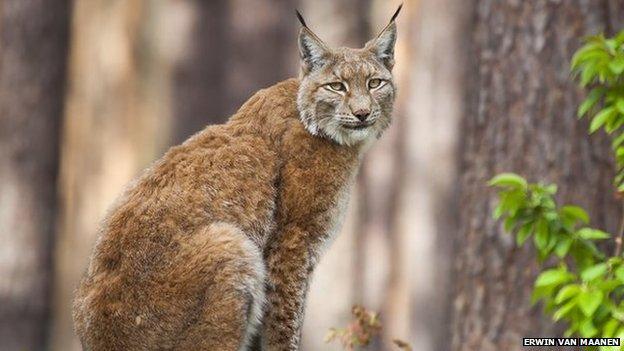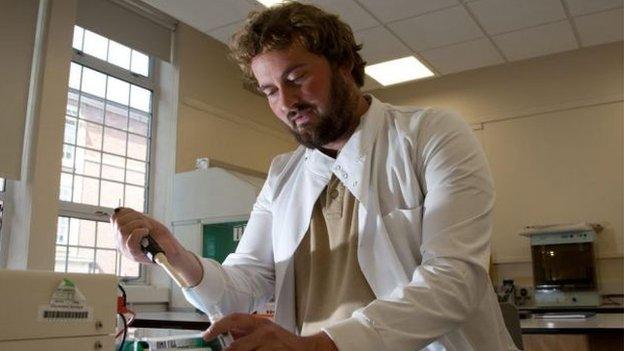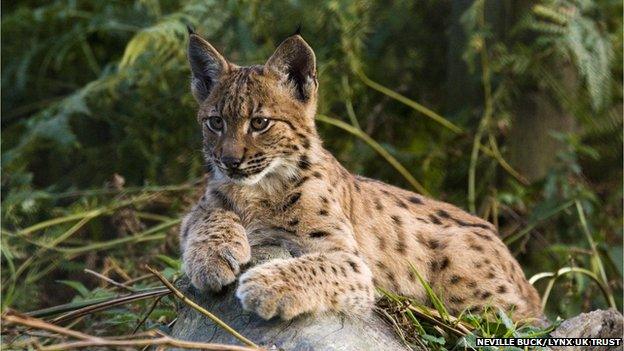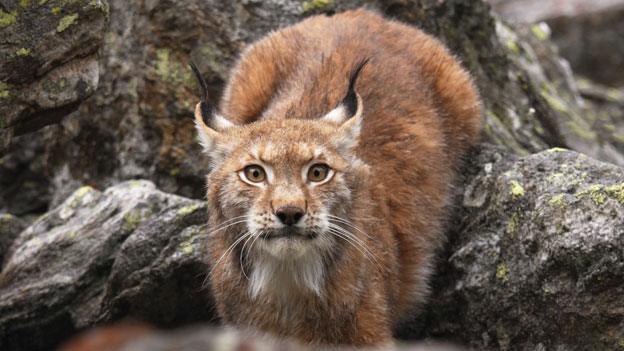Wild lynx could be reintroduced to parts of UK
- Published

Wild lynx can grow to the size of a large dog and weigh up to 70lb
Wild lynx, extinct in Britain for more than 1,300 years, could be released on to privately-owned estates in the UK.
The Lynx UK Trust is launching a consultation to sample the public's reaction to bring the big cats to Norfolk, Cumbria and Aberdeenshire.
Dr Paul O'Donoghue, from the trust, said he would visit a site next week to begin working with interested parties.
But the National Farmers' Union (NFU) is concerned about the impact the move would have on forest ecosystems.
The scheme would see four to six lynx, wearing radio tracking devices at each site, each of which are rich in deer and tree cover.
One site would be at Grumack Forest in Aberdeenshire.
The other two remain undisclosed but the BBC believes one is close to Thetford Forest, on the border of Suffolk and Norfolk, while the other is in Ennerdale, in the Lake District.

Paul O'Donoghue says the response has been overwhelming
Once the Lynx UK Trust's consultation is completed, it will lodge a formal application with Natural England and Scottish Natural Heritage.
Dr O'Donoghue said the story had generated great interest: "We're delighted by the overwhelmingly positive response.
"It will be done in a very controlled, scientific way and we would be sure that everyone's concerns and voices would be taken into account."

Lynx cubs can expect an average lifespan of 10 years in the wild
Andrew Clark, director of policy for the NFU, said: "The NFU would be concerned at the reintroduction of Lynx due to the cost involved and high risk of failure.
"With limited funding available, budgets are better focussed on retaining and developing existing biodiversity."
Peter Watson, of the Deer Initiative, a group formed to find humane ways of controlling deer, called for a feasibility study for the experimental reintroduction.
"We want to protect our native biodiversity and also reduce the number of vehicle collisions there are with deer," he said.
"We can see no reason relating to deer management not to accept or support a feasibility study into the reintroduction in suitable habitat and prey locations."
- Published9 March 2015
